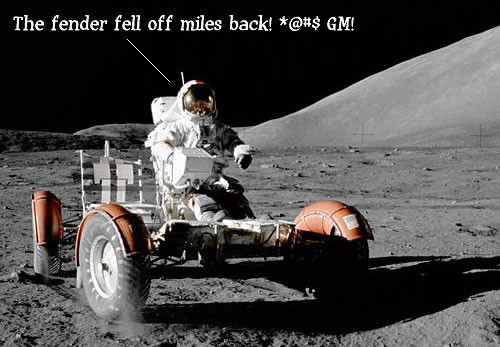Trivia Question Were Ford GM Shares This Cheap Even Back in the 1970s
Post on: 23 Апрель, 2015 No Comment

Ford Motor (F ) and General Motors (GM ) sell some fine automobiles. The new Ford Fusion hybrid is drool-worthy. The Cadillac CTS is so pretty, it makes my Audi A4 jealous.
But should we be as enthusiastic about their stocks?
Both stocks have been losers recently. But U.S. automotive shares have a history of producing enormous windfalls for investors. The late great John Templeton showed us exactly how to do it decades ago: Buy when they’re terribly out of favor, then demonstrate monk-like patience.
Templeton was a Ford man. He started accumulating his stake in the company in 1978, when Ford looked like it was headed for bankruptcy and its shares were at around $2 (split-adjusted). Sir John’s patience was epic. He kept buying the shares, even as they continued to slide, eventually hitting a nadir of around $1 in 1981. He probably looked a bit foolish. But by 1987 Ford had zoomed to $15, and it was obvious that Templeton had been right all along.
Meanwhile, the chicken-little investors who waited until Ford looked like a safe bet weren’t rewarded as richly. Ford went on to become a $34 stock in 1999, but it has never returned to that level again.
Today, Ford stands at $10. GM, still in search of its footing after the government bailout President Obama led, is at $24. They’ve been crummy investments, especially over the past two years, as seen in a stock chart .
Are these stocks again once-in-a-lifetime deals that John Templeton would grab, like they were in the late 1970s? Are they a modest bargain, like they were in the late 1980s and early 1990s? Or are they overpriced, like Ford was in 1999?
Unfortunately, Templeton is no longer with us, so we can’t easily discover what numbers he was focused on in the 1978-1982 period. But I know from my visit with the man in October 2001 that he liked to keep things simple. His favorite metric was the PE ratio .
Do those look low enough for you? I’ll tell you something else Templeton liked: Comparing a company’s stock price to its potential future earnings. Ford is trading at less than 7 times the $1.50 in per-share earnings analysts think it will garner next year. GM is trading at scarcely more than six times the $4 or so analysts are expecting it to earn.
Now, remember: This is an environment where the average S&P 500 stock is trading at more than 16 times EPS. Honda Motor (HMC ), Toyota Motor (TM ) and India’s Tata Motors (TTM ) are trading at 8 times, 10 times and 46 times analysts’ 2013 estimates.
But if you like the sound of PE ratios that are less than half that, hang on. It gets better.
Check out this chart:
Those lines show these two companies’ cash on hand. Ford and GM being solidly profitable, the cash in their war chests is not likely to plummet. Now, keep that in mind as you look at this next chart, which in addition to showing cash on hand overlays these two companies’ market capitalizations.
No, your eyes are not deceiving you. The stock market is valuing these two companies’ net worth to be not very much more than their cash on hand.
You want to have fun? GM has about 1.6 billion shares outstanding. So its cash horde is just shy of $22 a share. If you trust that GM won’t suddenly spend all that money, it’s pretty reasonable to back that per-share cash horde out of the stock price when you calculate GM’s PE ratio. If you do, you’re left with a PE ratio of about 0.6.
If you perform a similar exercise with Ford, which has 4 billion shares out and $17 billion or so in cash, you’re left with a PE is 3.8.
Now, it can’t all be wine and roses. Investors are pessimistic for a reason, after all.
For one, both Ford and GM are heavily indebted.
Right now, neither company is having trouble making debt service payments. But if there’s a recession, all bets are off. Both companies will be plundering their cash on hand with verve.
Plus, when you look at high-debt companies, PE isn’t necessarily the most important measure. It’s usually better to focus on enterprise multiples—the company’s enterprise value divided by its earnings before interest, tax, depreciation and amortization. The enterprise multiples of these two companies is not easy to calculate because they have finance arms that complicate their numbers. YCharts Pro data puts the figures at 13 for Ford and 8 times for GM. My own calculations yield roughly the same numbers.
And goodness knows that even if the economy stays buoyant, there are business challenges here. GM’s visionary Volt plug-in hybrid is not catching on the way that some had hoped and the company faces questions about what the government eventually might do to unload its stake in the company. Both companies’ popular pickup-truck lines will come under enormous pressure in the next 10 years as the U.S. gas-mileage standards zoom upwards.
Still I think if Templeton were alive today, he’d be intrigued by these two stocks. If you buy in, remember to be patient.
Read more articles about: Company Analysis














